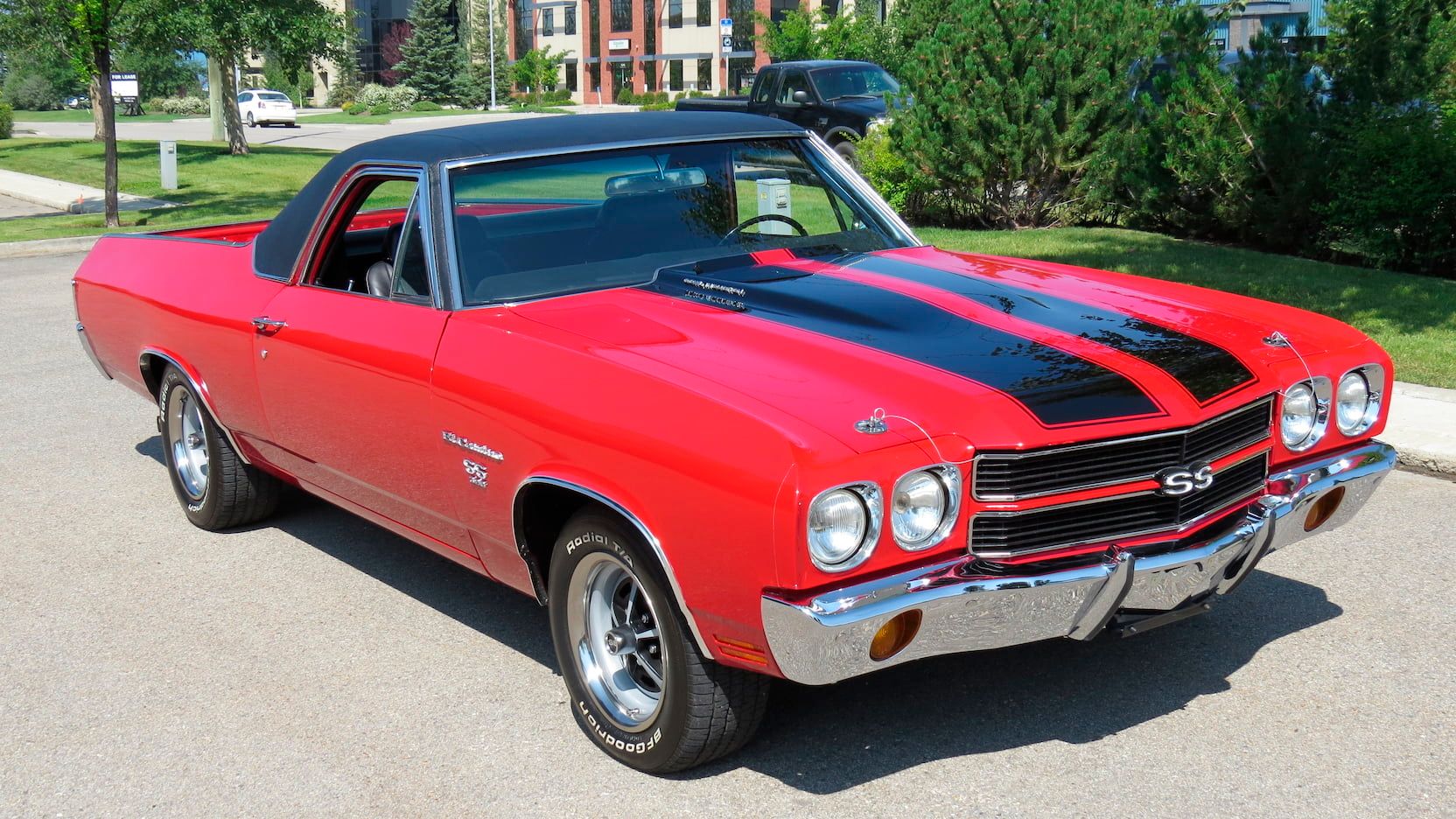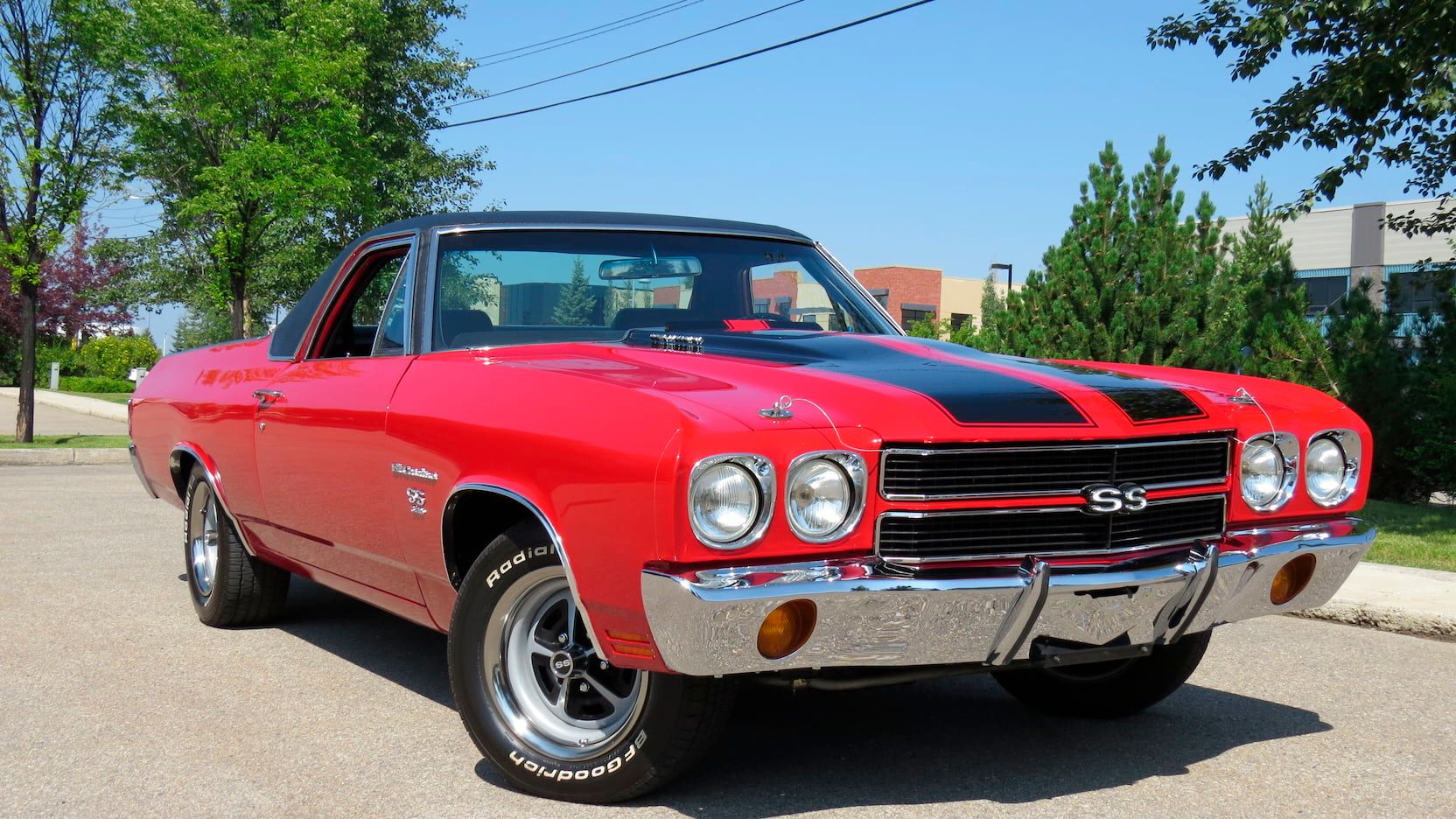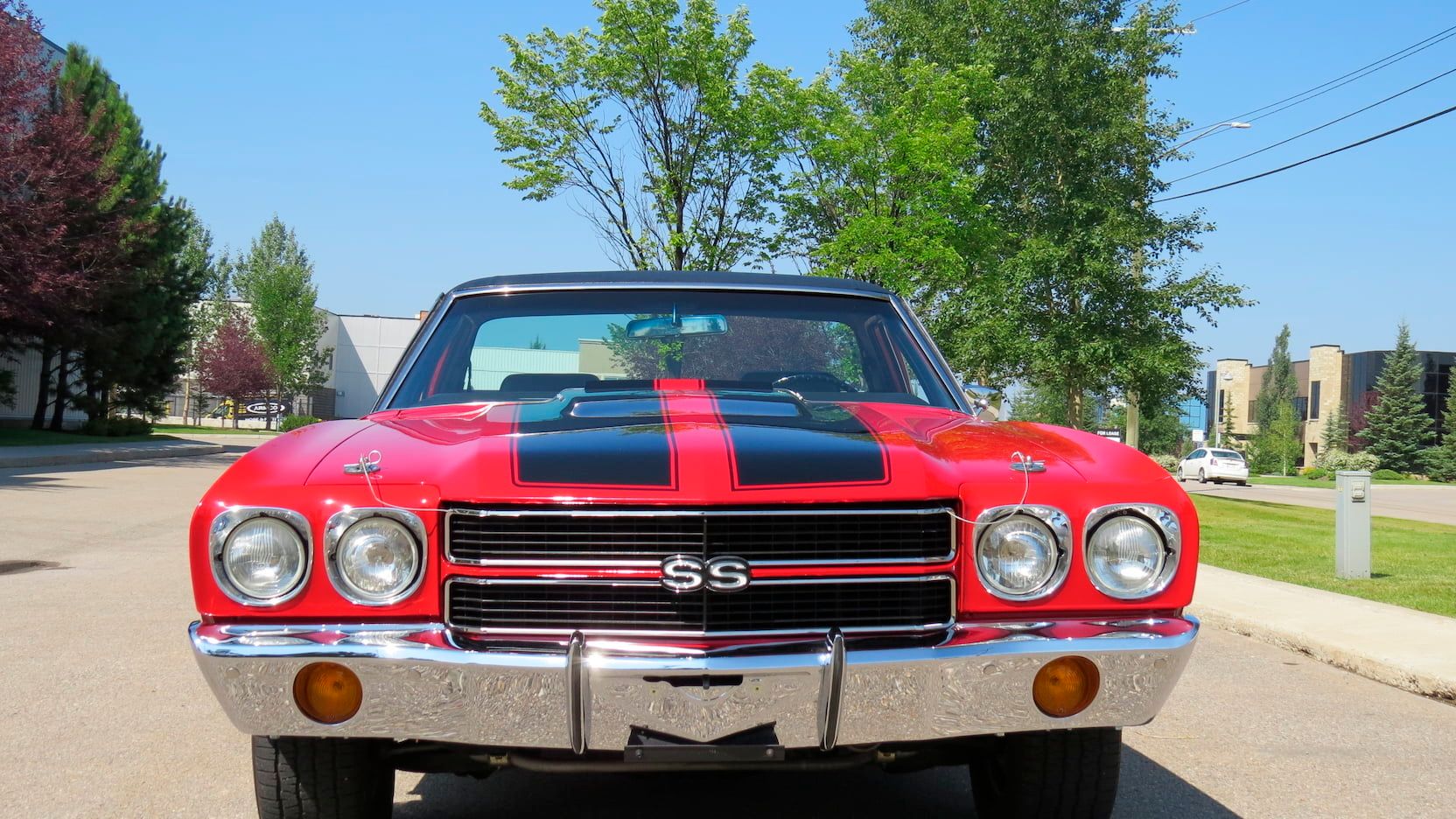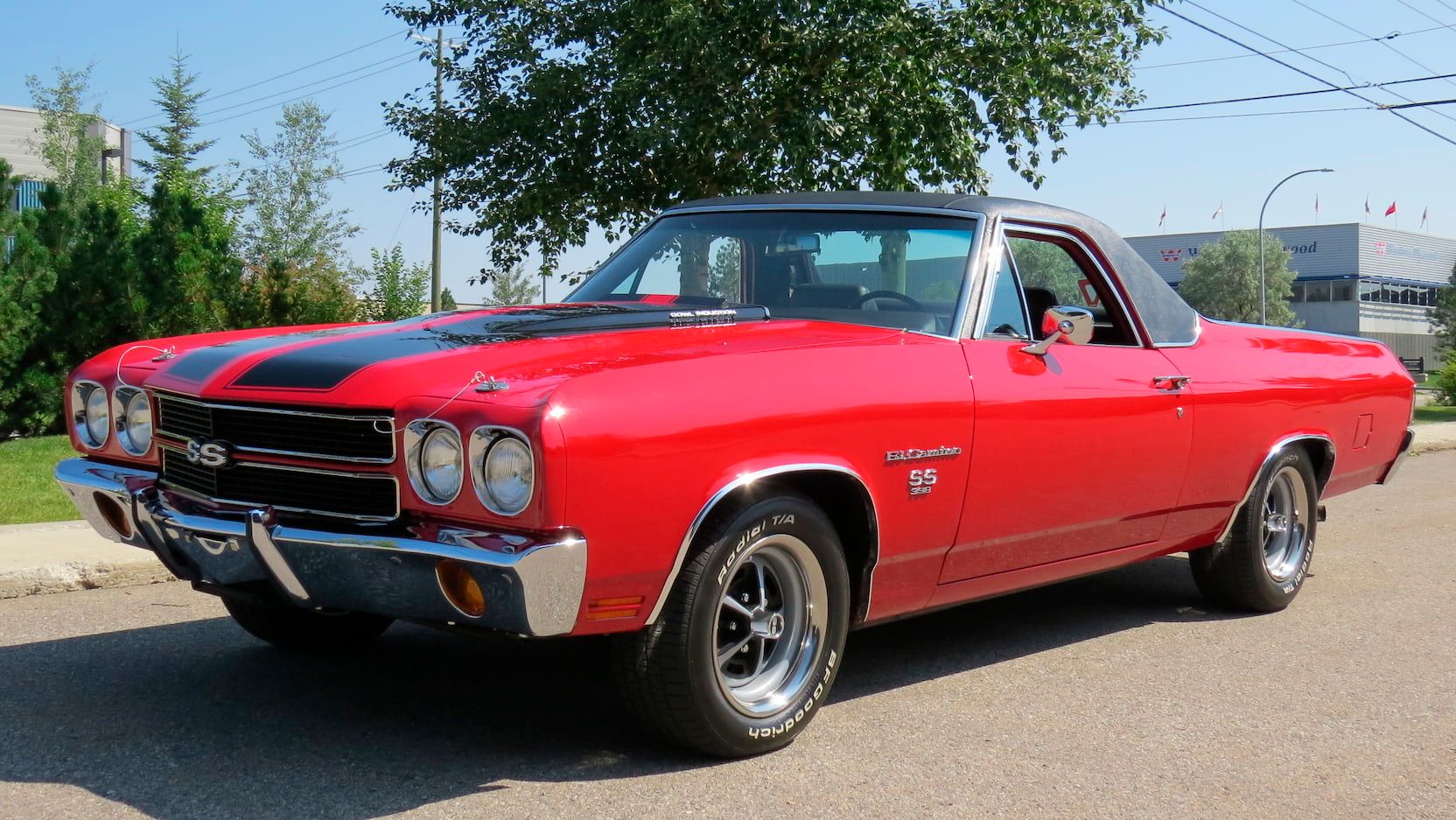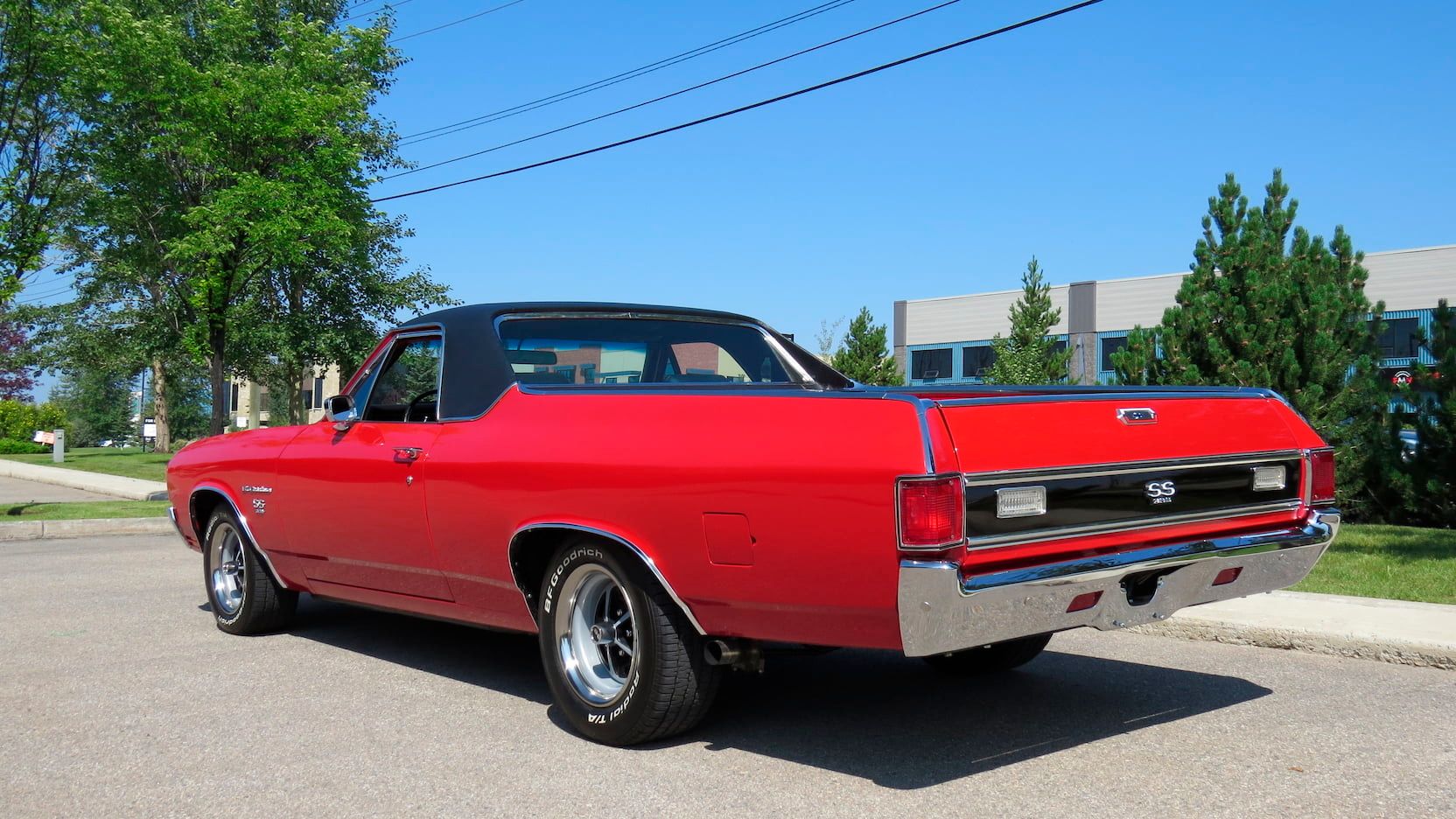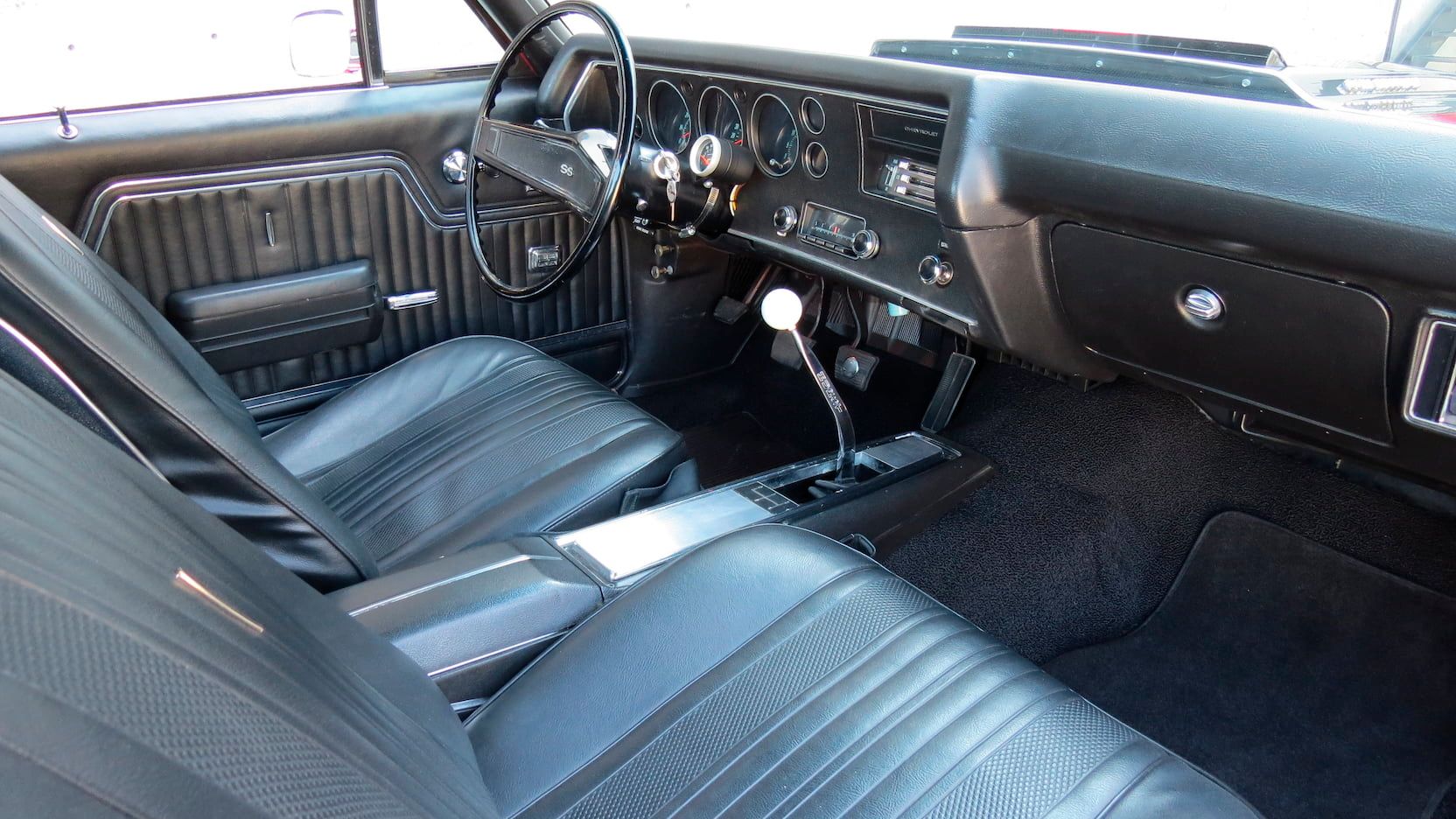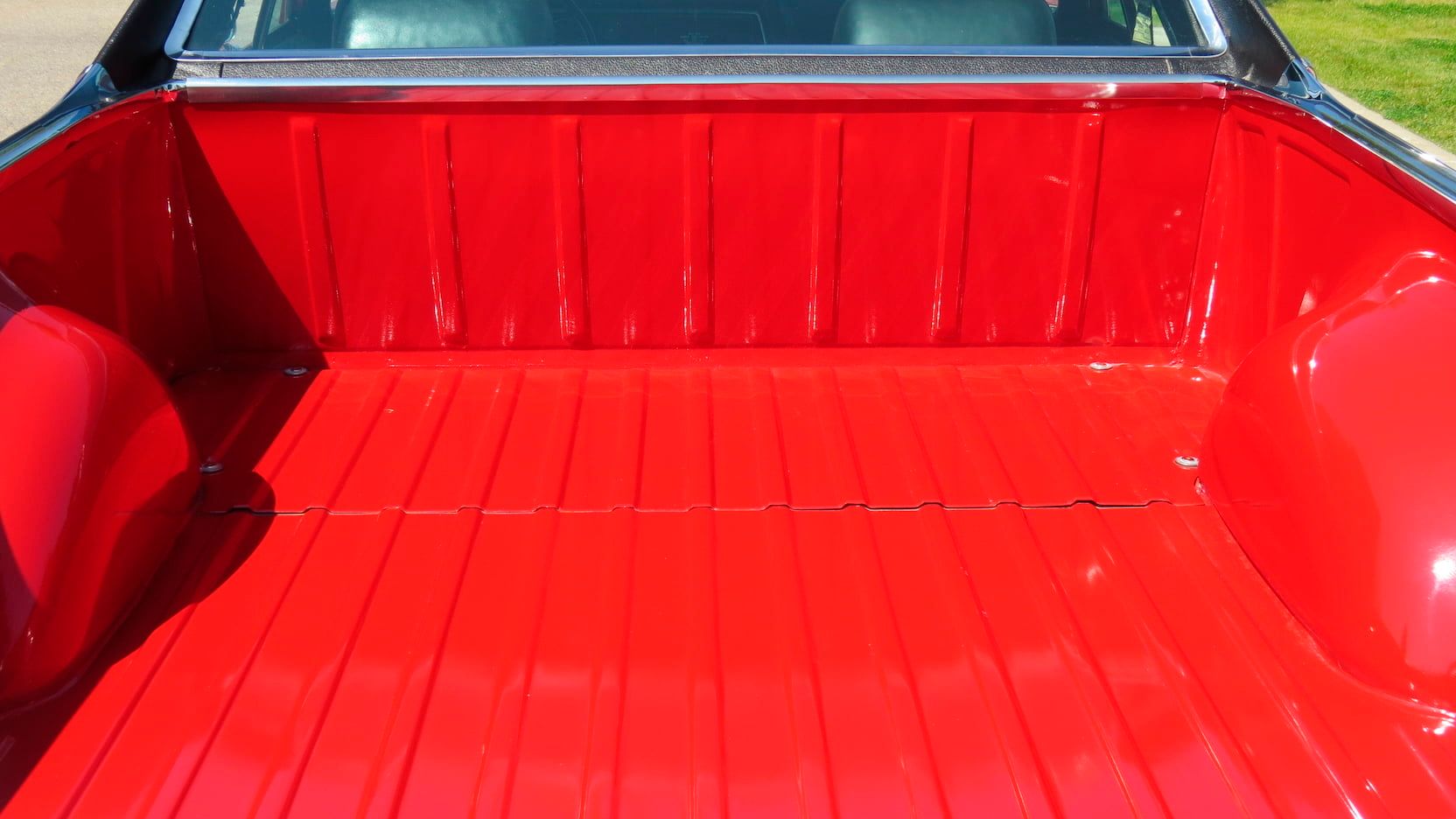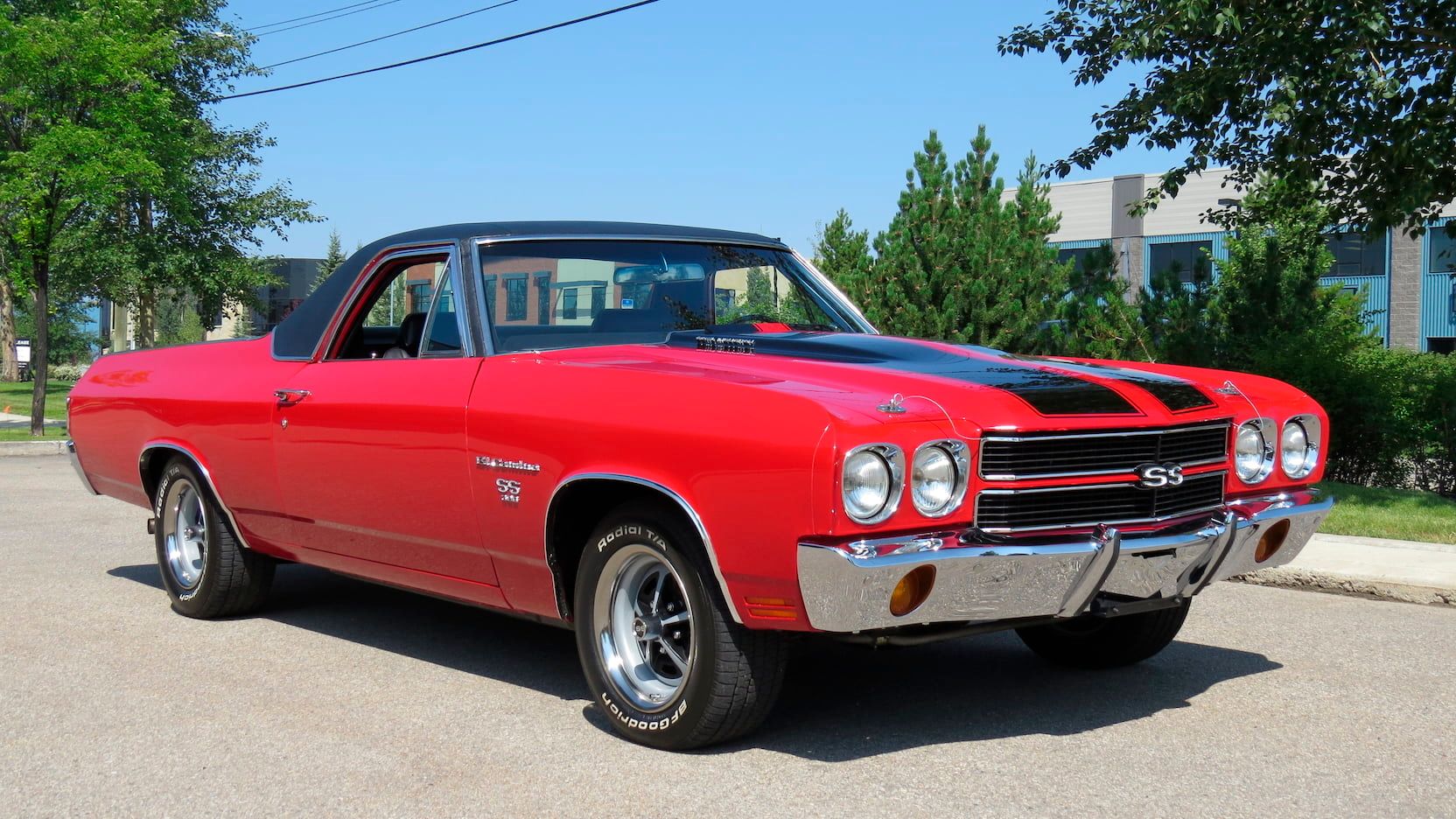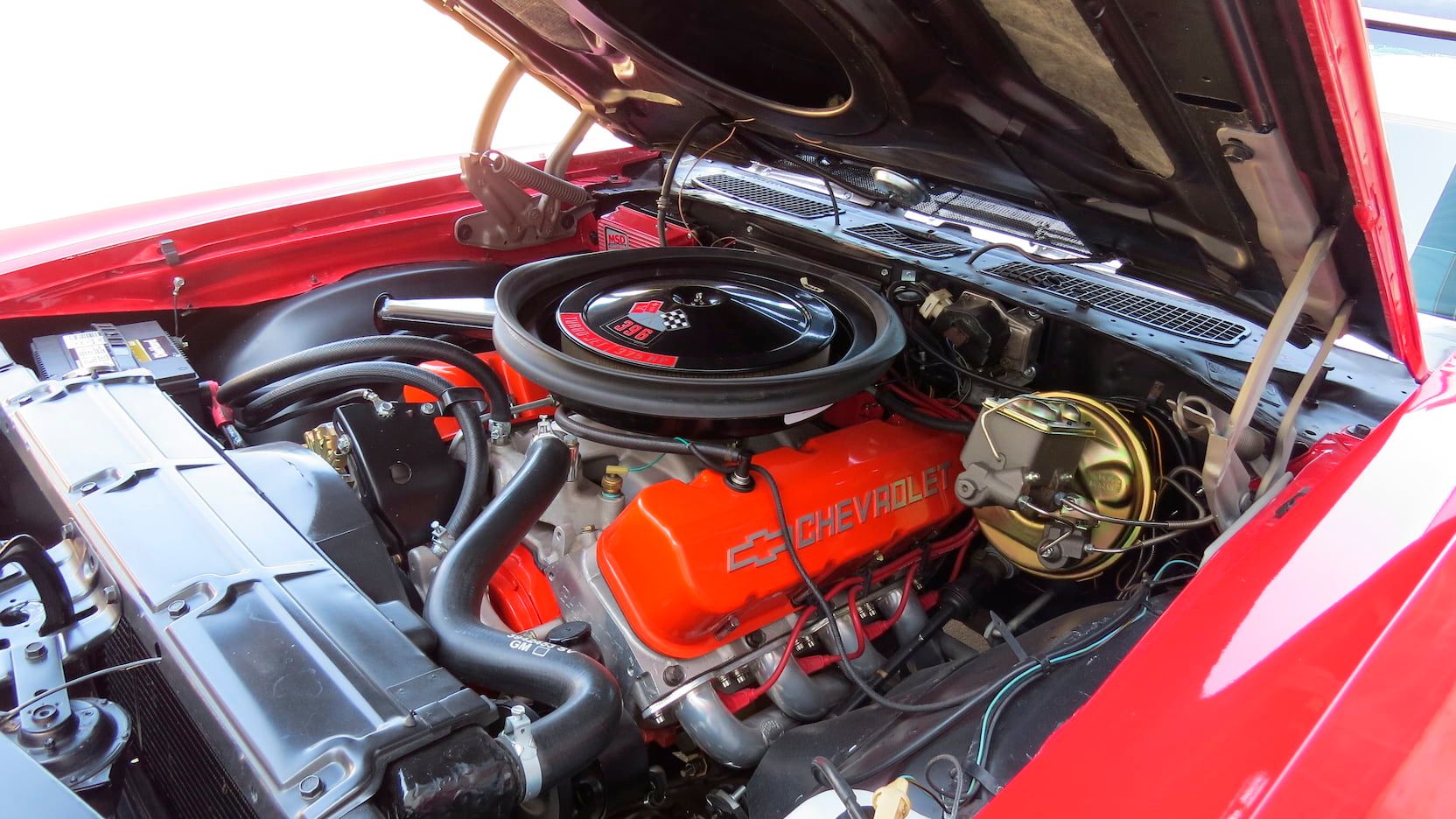The Chevrolet El Camino coupe utility vehicle was classified as an SUV at the time. It was based on the chassis of a sedan but offered a sizeable bed behind the seats. The third generation El Camino was the second to last to be based on the Chevelle platform.
The El Camino was GM's answer to the Ford Ranchero. Apparently, GM's Harley Earl had thought about introducing a coupe utility vehicle a full five years before Ford debuted the Ranchero but internal decision-making delayed the concept which was only green-lighted after GM noticed that the Ranchero had a market.
The El Camino became, arguably, the most practical muscle car by 1970 as a response to the Ranchero which was, by now, based on the Ford Falcon. That's why you could get an El Camino with the Super Sport package and an almighty engine under the hood. This particular example comes with the 7.0-liter 550 horsepower V-8 engine which wasn't available on the El Camino at the time.
Keep reading to learn more about the 1970 Chevrolet El Camino SS
1970 Chevrolet El Camino SS
- Make: Array
- Model: 1970 Chevrolet El Camino SS
- [do not use] Vehicle Model: Array
1970 Chevrolet El Camino SS Exterior
The Chevrolet Chevelle went from being a Bel Air-inspired coupe utility vehicle to a full-blown muscle car with a bed in the back to haul all kinds of stuff. Indeed, the El Camino - which means 'The Way' in Spanish - went through quite a transformation during its life cycle.
At the time, Chevrolet sold the El Camino as a light workhorse which is why they didn't bother to offer the Chevelle's more feisty engine options. But, as years rolled by and Ford upped the ante performance-wise with their Falcon-based Ranchero, Chevrolet had to rise to the occasion. Obviously, the muscle car craze was also starting to bloom by the time the third-generation El Camino dropped in 1968 so, one year later, an SS version with the 6.5-liter V-8 became available.
As noted by many fans and journalists, the El Camino rose in popularity at a time when automakers restyled their cars for almost every model year. That's why the El Camino was altered again stylistically for the year 1970 before receiving another makeover in 1971.
Basically, the El Camino followed suit in the Chevelle's footsteps when it came to looks. That's why the El Camino received the same boxy body for 1970, at least up until the A-pillar. To make things easier in the production phase, the El Camino has as long a wheelbase as standard 4-door Chevelle Malibu, although it's slightly longer due to the longer rear overhang.
Up front, the El Camino sports the four-headlight setup you'll find on the Chevelle. The round headlights, which sit inside chromed sockets, are located on either side of the two-piece horizontally-mounted grille.
This example comes with the D88 stripe package which gave the car a sporty look thanks to the two wide stripes - with black outlines - that stretch back to the windshield. The center panel of the tailgate is also painted in black. One of the optional extras that could be added to the SS package was the addition of functional hood pins which this car has.
The gimmicky cowl induction hood was also installed to this car. Its purpose is, according to Chevrolet brochures printed at the time, to "shoot an extra breath of cool air into the engine air intake... like second wind to a distance runner".
Another option was to have the roof covered in black vinyl. Not ideal if you lived in a sunny state but, then again, vinyl tops were popular in the '70s. While the 1970 Chevelle was as close to a pick-up muscle car as possible, it still had plenty of chrome. The bed was surrounded by chromed bars, as were the A-pillars, the window frames, and the wheel wells.
Inside the wheel wells, you'll find the typical 14-inch Super Sport hubcaps that combine chromed spokes with blacked-out inner elements and a polished lip. They are fitted with B/F Goodrich T/A Radial tires.
1970 Chevrolet El Camino SS Exterior Dimensions:
|
Wheelbase: |
116 inches |
|
Length: |
206.8 inches |
|
Width: |
75.4 inches |
|
Height: |
54.4 inches |
1970 Chevrolet El Camino SS Interior
As Chevrolet found a new market for the El Camino, one that looked for performance as well as practicality, the interior was also changed. Many of the elements inside are the same as on the Chevelle. You get the same driver-focused dash with the main instrument and gauge panel separated to the passenger side which is streamlined and only features the glove box.
Behind the SS-badged steering wheel - I feel the amount of SS badging that are all over this car is similar to how, nowadays, BMW can't stop telling you that what you're driving is an M-pack or a fully-fledged M model - there's a whole heap of gauges, all of them coming from the factory, including the tachometer.
More to the left there's the radio and, in the upper right corner, there are the controls for the ventilation.
The gear shifter of the Muncie Rock Crusher transmission sticks right out of the center console. The lever itself is chromed while the knob is white. The console itself is covered by a polished place that extends to the armrest between the seats.
1970 Chevrolet El Camino SS Drivetrain
The El Camino was available with a choice of inline-6 and V-8 engines during the four-year span of the third generation. The 3.8-liter and 4.1-liter inline engines were the choice of those that actually put their El Caminos to work although quite a few needed an extra punch and chose one of the V-8 options.
This El Camino, though, is a little bit special. It comes with a 427 (7.0-liter) engine. The 427 was most often found under the hoods of high-performance Corvettes or Camaros. In 1970, only the Corvette ZL1 was available with a 427. It was an iron block with aluminum heads that was rated at 430 horsepower. This is where the confusion begins. Mecum says this 472-powered El Camino is making a whopping 550 horsepower. Officially, no 427 had such an output in period, so it's either a mistake on their part or a modified unit. In any case, most 427s were rated at 460 pound-feet of torque.
Chevrolet offered four transmission options for the third-generation El Camino. Two of these were manuals, a 3-speed and the 4-speed M22 that's on this car, and there were also a couple of automatic gearboxes with either two forward gears or three known as the Powerglide and the Turbo-Hydramatic.
1970 Chevrolet El Camino SS Pricing
Back in 1970, an El Camino that wasn't brimming with optional extras would set you back about $23,000 in today's money. Nowadays, you can buy one that runs and drives for $8,000.
However, if you plan on owning an El Camino with one of those bigger engines that really light up the rear tires, prepare to pay over $20,000. The original SS El Caminos that came from the factory with the 454 are now somewhat rare which is why some trade hands for as much as $30,000. The good news is that Chevrolet dispatched 47,707 El Caminos in 1970 alone so there are enough cars in the market right now, many more than Rancheros of similar vintage.
1970 Chevrolet El Camino SS Competition
Ford Ranchero
The Ranchero was the first American postwar coupe utility vehicle. It combined the looks of a sedan with the practicality of a light pick-up truck. It became quite popular which is why Chevrolet responded with the El Camino which quickly overshadowed Ford's Ranchero.
For 1970, the Ranchero was restyled again. For the boxy '68-'69 look, the Ranchero went to a raunchy, razor-sharp, design for 1970. It had a shallow-pointed grille up front while the overall body shape was, as in the case of the 1970 El Camino, influenced by the coke bottle shape, very influential at the time.
You could get a Ranchero Squire for the first time in 1970. It was positioned as a top-of-the-line trim level. Meanwhile, whatever was available with the Ford Torino could also be ordered for the Ranchero, including the 7.0-liter Ram Air Cobra Jet engine that was distinguishable since it came with a cut-through hood which allowed the hood scoop to see the light.
1970 was also the first year that the Ranchero received its own badging, identifying it as either a 'Ranchero' or a 'Ranchero GT'. You could get the car with a variety of other engines at the time including a 5.8-liter V-8, a 4.9-liter V-8, and a 4.6-liter inline-6. The Ranchero had a shorter wheelbase than the El Camino and was arguably more stylish than the Chevy thanks to its optional hideaway headlights.
Read more about the Ford Ranchero
GMC Sprint
The Sprint was basically a re-badged El Camino sold through the GMC dealership network. It debuted in 1971, midway through the lifespan of the third-generation El Camino.
It came with a variety of V-8s, ranging from 5.7-liter units to 7.4-liter units. However, by 1971, more stringent emission regulations were enforced which necessitated a reduction in engine compression as well as equipping the cars with smog filters in the exhaust system.
The Sprint came with either a 3-speed synchromesh manual gearbox, a 3-speed automatic or a 4-speed manual. Power windows, an archaic cruise control feature or A/C were available as an option on the Custom trim level. Bucket seats were also an optional extra.
Conclusion
The El Camino has been for years a cult classic due to its coupe styling up front and straight-out pick-up practicality at the back. It's so popular that, all in all, Chevrolet sold around 1,000,000 El Caminos before production finally ceased in 1987 when less than 500 1988 model year El Caminos were built. However, its popularity hasn't rendered it viable for a re-introduction into the Chevrolet range although a number of such attempts were made in the '90s - based on the Caprice/Impala - and in the '00s. The only thing similar to the El Camino that came out of a Chevrolet plant in the 21st century is the odd-looking Chevrolet SSR of the early noughties.
So, with no new El Camino in sight, you'll have to go for an older one, but that's hardly bad news. The El Caminos up until 1972 look great, sound great, and move around well enough while also being practical. Or, if you want something way newer, go to Australia since their Ute tradition has lived on to the present day in either Ford or Holden guise. Go for the Maloo GTS if your pocket allows it!
Further reading
Read our full review on the 1970 Chevrolet Chevelle SS SL5/SL6.

